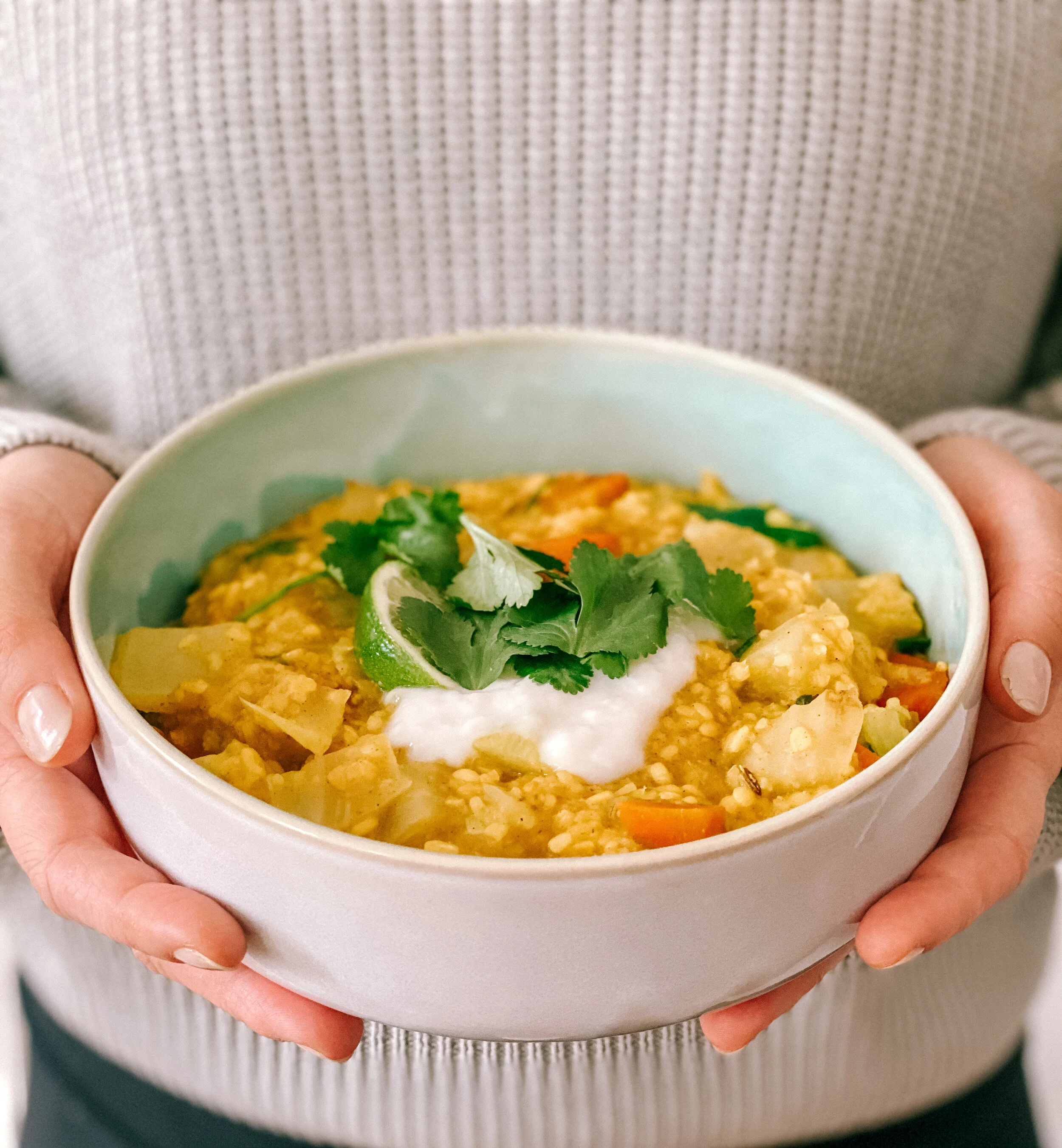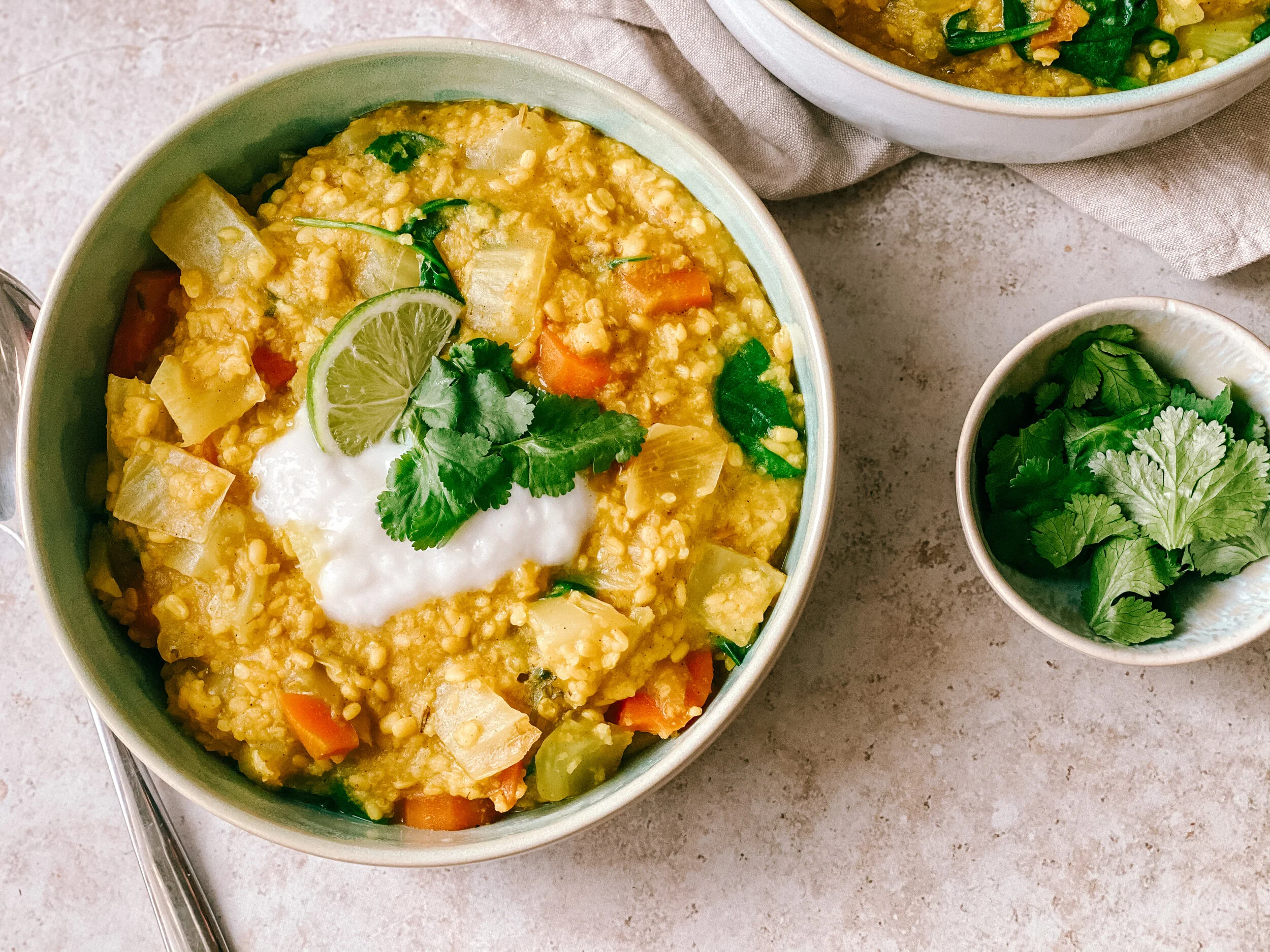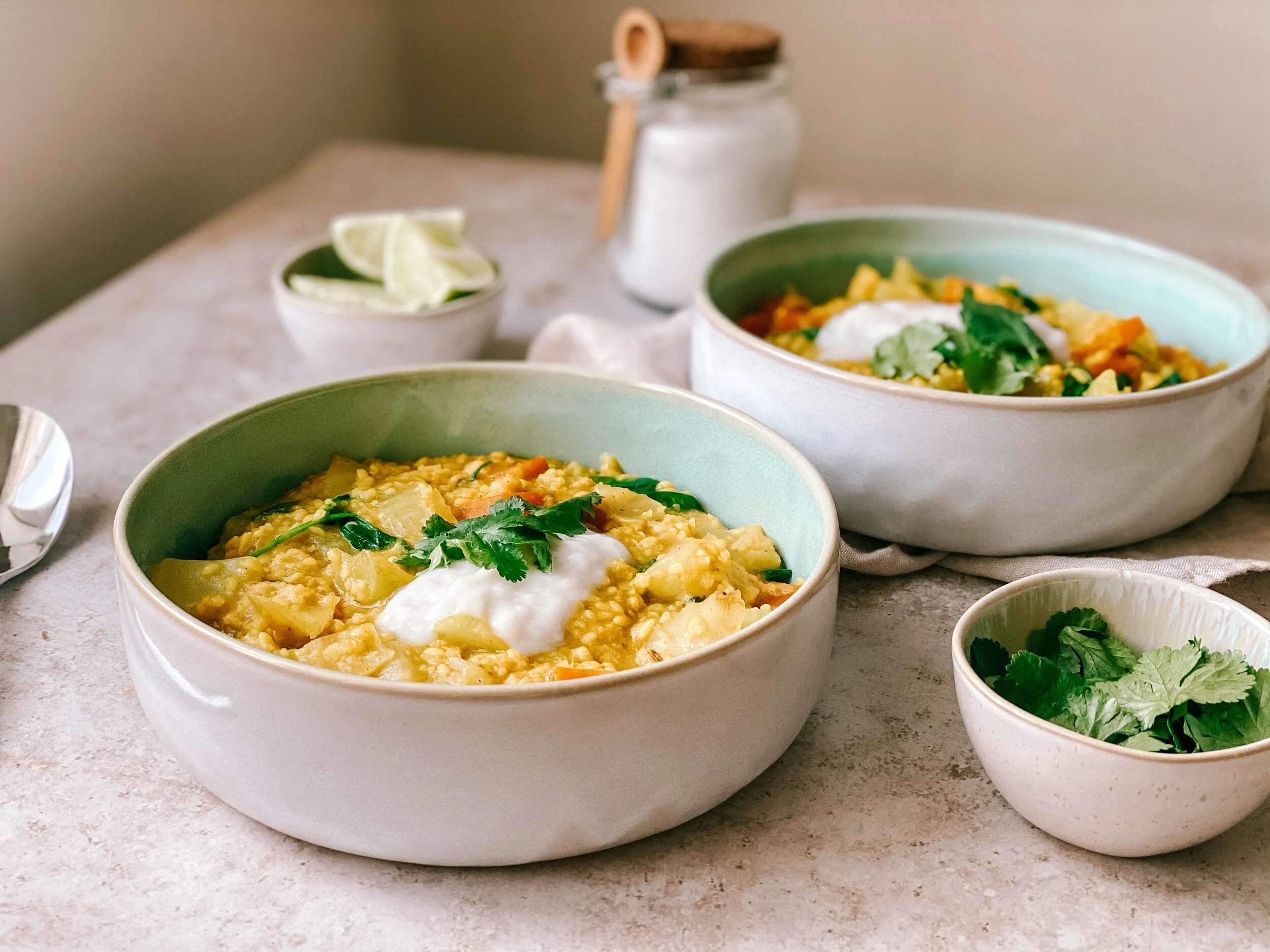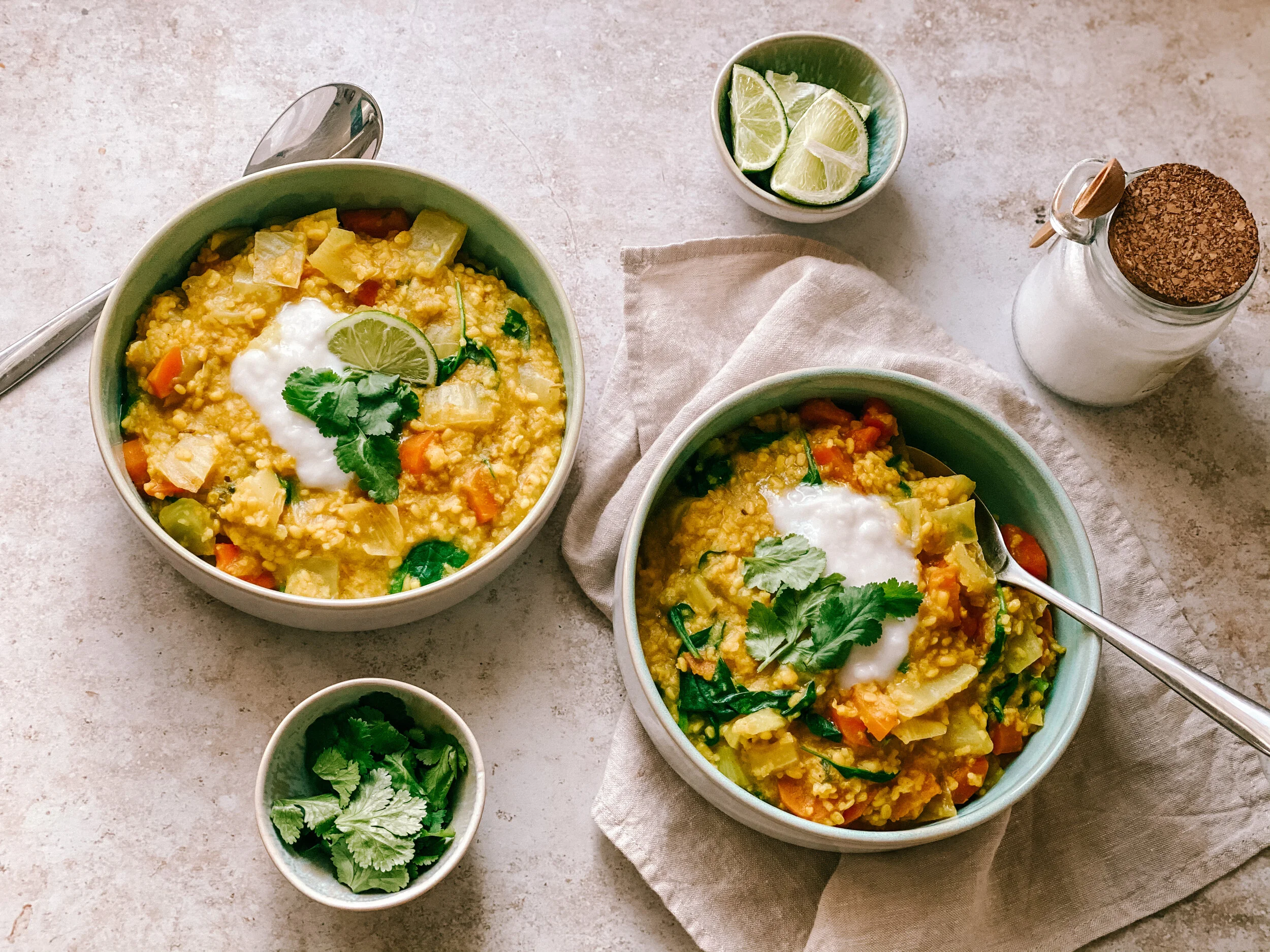Kitchari
Kitchari, Khichadi, Khichdi, Kitchadee, Kitcharee... there so many words for one of the most popular Ayurvedic healing dishes.
Kitchari is so easy on your digestive system and depending on the ingredients used, it’s a meal that is so versatile that you can eat it daily without lacking anything.
This simple one-pot meal is detoxifying and resetting your whole digestive system. If you are feeling like you have over-eaten for a while, you feel sluggish and could use a little reset or you are feeling sick – this one is your go-to! Kitchari is almost comparable to how “chicken soup“ is used in many countries, but this meal is more plant-based.
The recipe makes 2 servings. For 1 serving use only 1/4 cup of rice and dal and use less veggies. It takes about 45 minutes to make (including prep and cooking time).
INGREDIENTS
- 1/2 cup basmati rice
- 1/2 cup split yellow mung dal
- 1 cup carrots (pumpkin or sweet potato)
- 1 cup fennel bulb (broccoli or spinach)
- 1 strip kombu seaweed (also called kelp)
- 1 tbsp coconut oil or ghee
- dash of lime juice
Optional
- fresh cilantro (cooling)
- fresh parsley (slightly heating)
- (vegan) yogurt
Spices
- 1 tsp freshly ground cumin seeds
- 1 tsp freshly crushed or ground cilantro seeds
- 1 tsp freshly crushed or ground fennel seeds
- 1 tsp ground turmeric
- 1/4 tsp freshly ground cardamom
- 1/4 tsp freshly ground fenugreek seeds (also called “methi”)
- 1/8 tsp asafoetida (also called “hing“)
- 1/2 tsp grated ginger
- 1 tsp rock salt
- 1/4 tsp black pepper
INSTUCTIONS
Rinse basmati rice and mung dal.
Soak overnight or at least for 2 hours. This will make it easier to digest, as soaking legumes helps remove saponins and phytic acid which cause gas and bloating. It will also make prana more available and take much less time to cook.
Drain rice and dal and rinse well.
Put dal, kombu and 4-5 cups of water into a deep cooking pot and leave to cook on medium heat for about 5 minutes. Keep the lid on with a slight opening.
If any foam rises, discard it.
Now add the rice and cook for another 10 minutes.
You may add more water if you like. The soupier the consistency, the easier it is for your digestion. Hence, the more healing the effect.
Kombu is an edible seaweed which is rich in iron and calcium and aids in digestion.
It has the ability to render beans more digestible which makes them less gas-producing. And reduces the cooking time of beans because it makes them softer.
Meanwhile wash and chop your veggies of choice and add into the cooking pot after 15 minutes of cooking (if you chose spinach add it in the very end with salt and pepper).
Cook until the consistency is unctuous (quite soupy) and your veggies are soft – about 10 minutes.
Melt the oil or ghee over medium heat in a small pan.
First put in the seeds, then add the ground spices, besides salt and pepper!
Add ginger as well and sauté the spices until aroma arises – this process is called tempering.
Now you add the spice mix into your big pot, add salt and black pepper.
Turn off the heat and let the spices merge together so they can “become friends“ for a few minutes. You can add your spinach now.
In the end, squeeze the lime into the pot to incorporate all 6 tastes and discard the kombu.
Serve with some fresh parsley, cooling cilantro or (vegan) yogurt.
Enjoy while sitting down, taking time to savor every single bite.
Every time you make this dish, try to find out what your body needs most.
You can adjust the amount of water and spices to your taste or try other spices, for example a little bit of mustard seeds (be aware, they are quite heating). You can also experiment with other legumes and grains.
If you are very lazy or don’t have time at all, you can use a pressure cooker and simply add soaked grains and legumes as well as all other ingredients and let it cook by itself – my instruction definitely is more wholesome and healthier. But the pressure cooker is still better than takeaway!
I also use a thermos to keep my lunch’s kitchari warm until the evening, works well and saved me many times!
Would love to know if you enjoyed this meal it is literally like a warm belly hug.
Love,
Lisa




